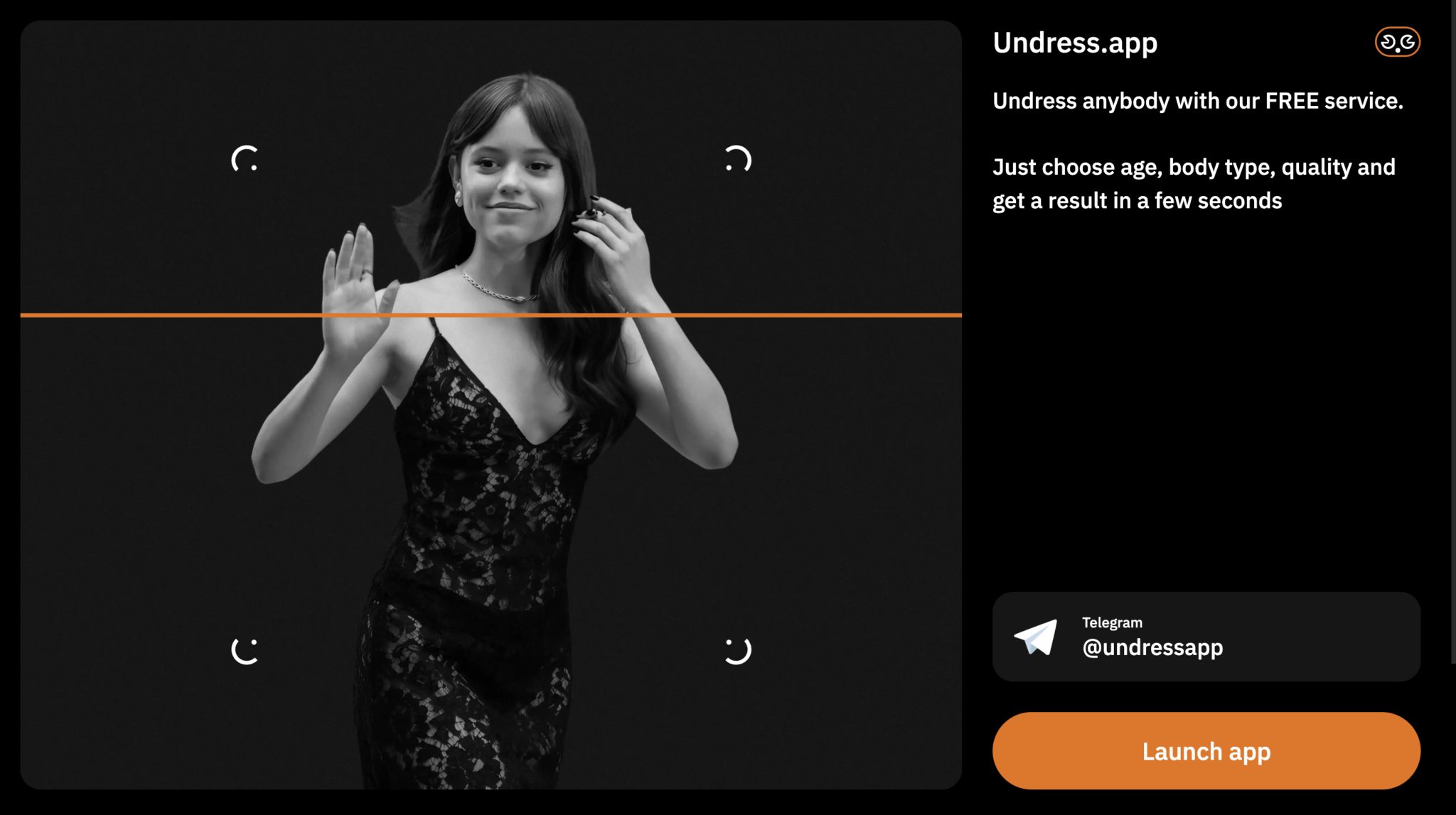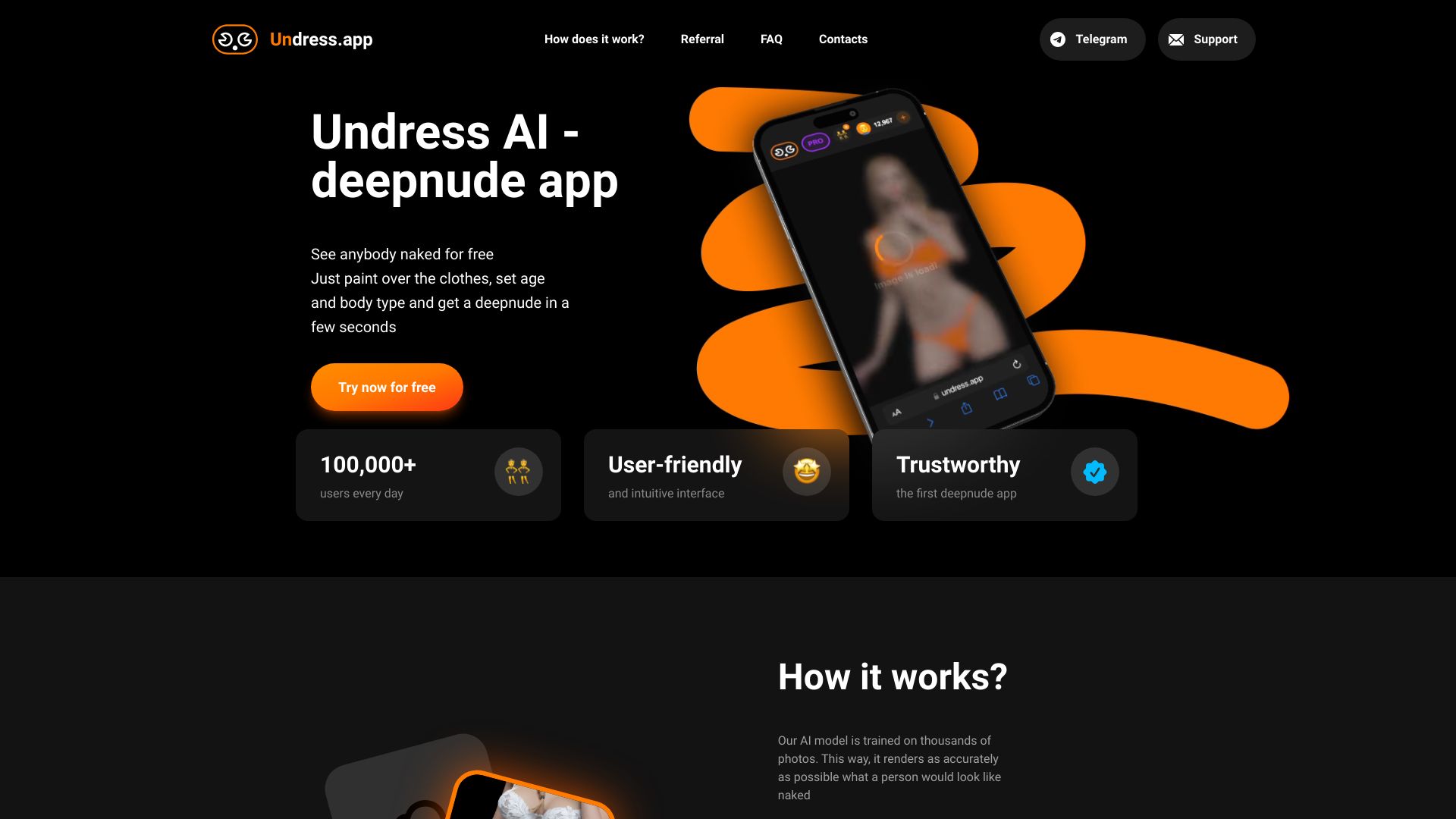Imagine a world where a simple photo can be manipulated to create something entirely different with just a few clicks. Welcome to the era of AI undressing apps, where artificial intelligence meets privacy concerns. These apps, powered by advanced machine learning algorithms, claim to remove clothing from images, sparking debates about consent, ethics, and technology misuse. But is this tech as harmless as it seems, or does it pose a serious threat to personal privacy?
The rise of AI undressing apps has sent shockwaves through the tech community and beyond. On one hand, proponents argue that these apps are just another example of technological innovation pushing boundaries. On the other hand, critics warn about the potential misuse of such tools, especially in the hands of malicious actors. As we dive deeper into this topic, you'll discover the ins and outs of these controversial apps, their implications, and what the future might hold.
So, why should you care? Because AI undressing apps aren't just a tech trend—they're a reflection of how rapidly evolving technology can impact our lives, relationships, and even legal systems. Whether you're a tech enthusiast, a privacy advocate, or simply someone curious about the latest digital developments, this article will give you the lowdown on everything you need to know.
- Aditi Mistri Leak The Truth Behind The Viral Sensation
- Unlock Your Entertainment A Deep Dive Into 7starhdin
What Exactly Are AI Undressing Apps?
At their core, AI undressing apps use deep learning algorithms to analyze and manipulate images. The process involves training neural networks on vast datasets of human bodies, allowing the software to "predict" what someone might look like without clothing. It sounds futuristic, right? But here's the kicker: these apps aren't just for fun—they have real-world consequences that affect people's lives.
These apps often rely on generative adversarial networks (GANs), which are essentially two AI systems working together. One system generates fake images, while the other tries to detect whether they're real or not. Over time, the generator gets better at creating realistic images, leading to some seriously impressive—but potentially dangerous—results.
Now, before we go any further, let's break down why this tech is so controversial. For starters, most of these apps don't require user consent. That means someone could take your photo from social media, run it through an AI undressing app, and create an altered version without you ever knowing. Scary stuff, huh?
- Malissa Rauch Nudes The Truth Behind The Clickbait And What You Should Know
- Divine Glamour The Ultimate Guide To Diva Flawlessxxx
How Do These Apps Work?
Let's get into the nitty-gritty details. AI undressing apps typically follow a few key steps:
- Data Collection: The software is trained on massive datasets of human bodies, often sourced from publicly available images.
- Image Analysis: Once you upload a photo, the app scans it to identify body shapes, contours, and other features.
- Image Manipulation: Using GANs, the app generates a new version of the image, removing clothing and replacing it with realistic skin textures.
- Output Generation: Finally, the app spits out the modified image, which can sometimes be shockingly lifelike.
While the technology itself is impressive, the ethical implications are staggering. Think about it: if someone can create a fake image of you without your permission, what does that mean for privacy and consent in the digital age?
The Ethical Dilemmas Surrounding AI Undressing Apps
Here's where things get tricky. AI undressing apps raise a whole host of ethical questions that society hasn't fully grappled with yet. For one, they blur the lines between consent and technological advancement. Is it okay to use someone's likeness in this way without their explicit approval? And if not, who's responsible for policing these apps?
Another concern is the potential for misuse. Imagine a scenario where an ex-partner uses an AI undressing app to create revenge porn. Or worse, imagine a stranger using your photo to create fake content and sharing it online. These scenarios aren't hypothetical—they're already happening, and they're causing real harm to real people.
But it's not all doom and gloom. Some argue that these apps could have legitimate uses, such as in the fashion industry or for artistic purposes. However, the risk of abuse far outweighs the potential benefits, at least in its current form. As we explore this topic further, we'll dive into the legal landscape surrounding AI undressing apps and what's being done to address these concerns.
Legal Implications: Who's to Blame?
When it comes to AI undressing apps, the legal waters are murky at best. Most countries haven't yet established clear laws governing the use of AI in this capacity. That leaves a lot of gray area for developers, users, and victims alike.
For instance, if someone creates a fake image of you using an AI undressing app, who's liable? Is it the app developer for creating the tool, or is it the user for misusing it? And what about platforms that host or distribute these images? These are questions that lawmakers are only just beginning to tackle.
That said, there are some promising developments on the horizon. Several countries, including the United States and the European Union, are exploring legislation to regulate deepfake technologies, including AI undressing apps. While it's still early days, these efforts could pave the way for more comprehensive protections in the future.
The Impact on Privacy and Consent
Privacy and consent are at the heart of the AI undressing app debate. In a world where our digital footprints are constantly expanding, it's becoming increasingly difficult to control how our personal information is used. And when it comes to AI undressing apps, the stakes are higher than ever.
For starters, these apps undermine the very concept of consent. By allowing users to manipulate images without the subject's permission, they strip away an individual's right to control their own likeness. This not only violates privacy but also perpetuates harmful power dynamics, particularly in cases of harassment or abuse.
Then there's the issue of data security. Many of these apps require users to upload photos, which raises concerns about how that data is stored and protected. What happens if the app's servers are hacked, or if the developers misuse the data they collect? These are questions that need answers, and fast.
Steps You Can Take to Protect Yourself
While the fight against AI undressing apps is ongoing, there are steps you can take to protect yourself in the meantime:
- Be Cautious About Sharing Photos: Think twice before posting personal photos online, especially on social media platforms.
- Use Privacy Settings: Adjust your social media privacy settings to limit who can see your photos.
- Report Misuse: If you discover a fake image of yourself, report it to the platform where it was shared and seek legal advice if necessary.
- Stay Informed: Keep up with the latest developments in AI and privacy law to stay ahead of potential threats.
By taking these precautions, you can reduce your risk of becoming a victim of AI undressing app misuse. But remember, prevention is only part of the solution. We need systemic changes to truly address the root causes of this issue.
The Role of Technology Companies
Let's shift our focus to the companies behind these apps. Are they doing enough to address the concerns surrounding AI undressing technology? The short answer is no. While some developers have taken steps to limit misuse, such as implementing age verification or content moderation, these measures often fall short.
One major issue is the lack of transparency. Many AI undressing app developers refuse to disclose how their algorithms work or how they source their training data. This lack of transparency makes it difficult to hold them accountable for any harm caused by their products.
That said, there are signs of progress. Some tech giants, like Google and Microsoft, have publicly condemned the use of AI for malicious purposes and have taken steps to restrict access to certain technologies. However, more needs to be done to ensure that all developers adhere to ethical standards.
Can Regulation Solve the Problem?
Regulation is one possible solution to the AI undressing app problem, but it's not without its challenges. For one, laws can take years to pass, during which time technology continues to evolve at breakneck speed. By the time regulations are implemented, they may already be outdated.
Another challenge is enforcement. Even if laws are passed, how do we ensure that they're being followed? In a globalized world, it's difficult to regulate cross-border tech companies, especially when they operate in countries with different legal systems.
Despite these challenges, regulation remains a crucial piece of the puzzle. By working together, governments, tech companies, and civil society can create a framework that balances innovation with accountability.
The Future of AI Undressing Apps
So, what does the future hold for AI undressing apps? Will they continue to evolve, or will they eventually be phased out? The answer depends on a variety of factors, including technological advancements, societal attitudes, and regulatory actions.
On the one hand, the technology behind these apps is only going to get better. As AI continues to improve, we can expect even more realistic and sophisticated image manipulation tools. This could lead to both positive and negative outcomes, depending on how the technology is used.
On the other hand, growing public awareness and pushback could lead to stricter controls on AI undressing apps. As more people become aware of the risks associated with these tools, there may be increased pressure on lawmakers and tech companies to take action.
Ultimately, the future of AI undressing apps will depend on how society chooses to engage with this technology. Will we embrace it as a tool for innovation, or will we reject it as a threat to privacy and consent? Only time will tell.
What You Can Do to Stay Ahead
As we wrap up this article, here are a few key takeaways to keep in mind:
- AI undressing apps are a powerful but controversial technology with significant implications for privacy and consent.
- While the tech itself is impressive, the potential for misuse is a major concern that needs to be addressed.
- Regulation, education, and individual action are all necessary to combat the negative effects of AI undressing apps.
So, what's next? If you're concerned about the rise of AI undressing apps, consider sharing this article with others to raise awareness. You can also stay informed by following developments in AI and privacy law, and advocating for stronger protections at the local and national levels.
Conclusion: Time to Take Action
In conclusion, AI undressing apps represent both a technological marvel and a potential threat to personal privacy. While the debate surrounding these apps is far from over, one thing is clear: we need to act now to ensure that technology serves humanity, not the other way around.
By understanding the risks and taking steps to protect ourselves, we can help shape a future where innovation and ethics go hand in hand. So, what are you waiting for? Join the conversation and let's work together to build a safer, more responsible digital world.
Table of Contents
- What Exactly Are AI Undressing Apps?
- How Do These Apps Work?
- The Ethical Dilemmas Surrounding AI Undressing Apps
- Legal Implications: Who's to Blame?
- The Impact on Privacy and Consent
- Steps You Can Take to Protect Yourself
- The Role of Technology Companies
- Can Regulation Solve the Problem?
- The Future of AI Undressing Apps
- What You Can Do to Stay Ahead
- Unlocking The Potential Of Wega Movein A Comprehensive Guide
- Unlock The World Of Filmyfly South Movies Hindi Dubbed


